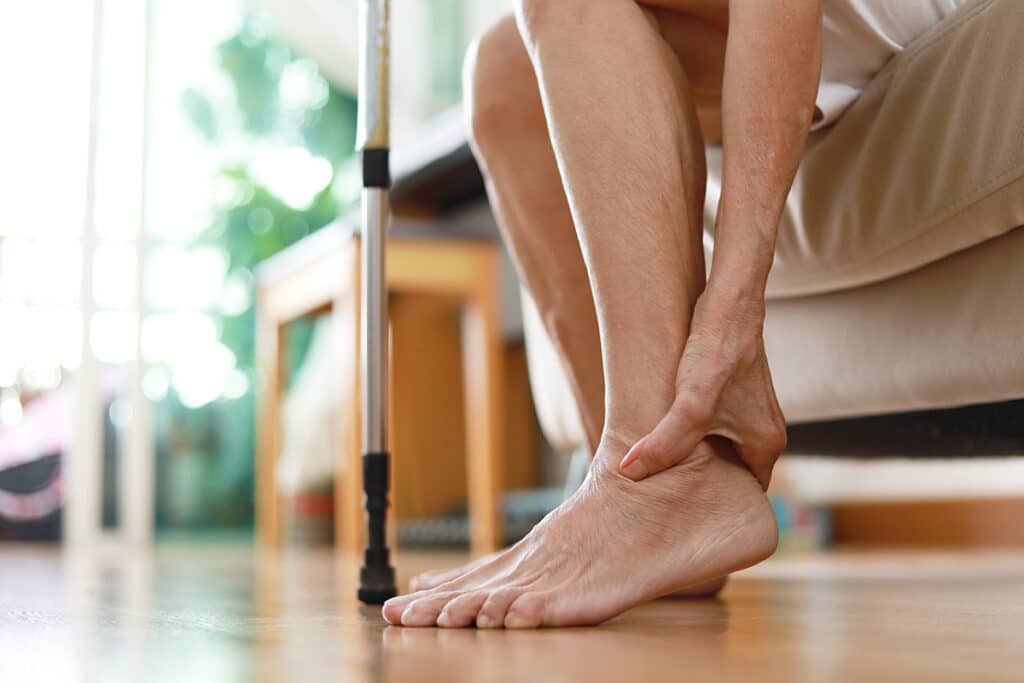
Deltoid ligament sprains are a common injury among athletes and those who participate in physical activity. The deltoid ligament is a strong, fibrous band that connects the bones of the ankle to the tibia bone in the lower leg. When this ligament is stretched beyond its limit, it can result in a sprain causing pain, swelling, and difficulty walking. In this blog post, we will discuss some of the common symptoms of deltoid ligament sprains and explore the best treatment options available to alleviate pain and restore mobility.
Symptoms of a deltoid ligament sprain can vary depending on the severity of the injury. Mild sprains may produce only slight discomfort, while more severe injuries can result in significant pain and swelling. Some of the common symptoms of a deltoid ligament sprain include:
Pain: The most noticeable symptom of a deltoid ligament sprain is pain. The pain is usually felt on the inside of the ankle, and it increases with movements that involve twisting or turning.
Swelling: Swelling is another common symptom of a deltoid ligament sprain. This is because the ligament is a connective tissue, and its inflammation leads to swelling of the ankle.
Bruising: Bruises are more common when injuries are severe. When a sprain occurs, the soft tissues surrounding the ankle can be damaged, leading to the formation of bruises.
Difficulty walking or standing: Deltoid ligament sprain can be so severe that you may find it hard to walk, stand or put pressure on the ankle as they can affect mobility and stability of the ankle.
Tenderness: Tenderness around the injured area is felt when you touch it or put pressure on it. This can be an indication of tissue injury.
If you experience any of these symptoms after an ankle injury, it is essential to seek medical treatment immediately. Your healthcare provider may recommend rest, icing the affected area, and limiting physical activity. Other treatment options include physiotherapy and chiropractic care.
Physiotherapy focuses on a range of exercises that can help to promote healing and reduce the risk of further injury. It may include a combination of stretches, exercises, and ice massage. With physiotherapy, the healing process of torn ligaments is accelerated and helps to protect the bone or joint from further damage.
Chiropractic care involves the use of manual adjustments to restore proper alignment and function of the ankle joints. The chiropractor works on the ankle, improving mobility, and helping to alleviate pain. Chiropractic care is used to create space in between the bones of the ankle, which helps to keep proper alignment in the ligaments which can aid in its healing.
In conclusion, a deltoid ligament sprain can be a painful and debilitating injury. If you experience any of the symptoms described after an ankle injury, it is essential to seek medical attention immediately. Rest and ice can help to reduce pain and inflammation, but more severe injuries may require physiotherapy or chiropractic care. Physiotherapy and chiropractic care are effective ways to treat a deltoid ligament sprain as they help restore mobility, alleviate pain and accelerate the healing process. With appropriate diagnosis and treatment, most people can make a full recovery and return to their normal activities.
If you have any questions or would like to explore further, please book a free, no-charge online appointment with either myself, Dr. Tyler Baron, BASc, DC or another Kitchener chiropractor at CARESPACE. We are happy to listen and are here to help!

